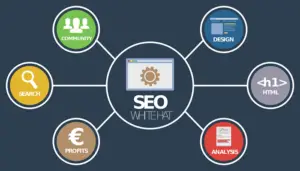The customer journey plays a major role in retaining existing buyers and attracting new ones. A smooth customer journey can lead to higher profits and lead your brand to the top.
A prerequisite is a deep understanding of the customer and their behavior. This article will go over the different stages of the customer journey to help you get started or improve your existing strategies and processes.

The customer journey is divided into different stages. Your potential consumer will go through these stages, and you should guide them through them so you can introduce them and allow them to “buy into” your product.
A customer’s journey begins with awareness. This is where we’ll talk about the difficulties of each stage.
However, you might be asking yourself: why is it crucial to provide consumers with a smooth onboarding procedure? What is the effect on your bottom line? Let’s dive right in and find out.
What Is The Customer Journey For?
The customer journey is a term that refers to the process of mapping out various scenarios based on current data.
Creating a blueprint for a customer’s journey may seem like a ridiculous notion at first. How do you know what a customer will do when they walk into your store or visit your website?
No matter how experienced you are in marketing, you can easily design a tool like this for your company’s future marketing efforts.
To keep up with the ever-evolving world of online commerce, it’s critical to anticipate and plan for the behavior of your customers at every stage of their journey.
Setting your objectives based on stale assumptions is the very last thing you should do.
The Importance of Mapping the Customer Journey
Creating a blueprint for the customer’s journey is crucial because it gives you a detailed picture of exactly what people do and why at each stage.
This will help you determine the content, prices, shipping, and payment methods that your customer sees at each step.
Varying the methods that your customers have to complete their goals will make them feel comfortable with your brand as well as give them more info about what they are buying.
Knowing which steps your customer has to go through may also influence your marketing strategies from the beginning.
Mapping Out Your Customer Journey
To create an engaging user journey map, you must look at it from the customer’s perspective. To do this, you’ll need to conduct two sorts of research:
Analytical
You can use the analysis on your website to know exactly where your customers are and how long they have been with you. Describes the tools you can use to track user-created material and organize information into logical streams.
This is similar to how Google advertising agencies and marketers use campaigns to learn more about their customers. The difference is that you want to see how the user is communicating with you by analyzing the emails sent by the user and the status of each interaction.
Anecdotal
This information is difficult to get by. What is the best way to learn what your customers are thinking about?
Customers’ feelings and thoughts can be gauged through social media. People may feel forced to let you know on social media whether they were pleased or dissatisfied with their encounter with your firm.
You may also acquire anecdotal data by asking clients to complete surveys regarding their experiences.
For correct planning, it is essential to have tools that allow you to track client behavior. This is the same way some people go about finding vendors for their online stores.
Moving forward, you will be able to make sure that the data is being collected correctly and that you are continuing to provide your services in a way that meets the needs of your most important clients.
Creating A Customer Journey Map
The way that customers go through each stage of their journey is different from person to person. Every individual has different needs and different ways of behaving.
The way they move through each stage has subtle elements such as attitudes and emotions that one customer may have when she or he meets with a certain company.
However, not everyone knows where to begin. And trying to find your way through the customer journey may seem complicated at first. Below, you’ll find a helpful step-by-step walkthrough to guide you through the process.
Step 1: Keep the Customer in Mind at All Times
If you do everything you can to put yourself in the customer’s shoes, you can do a lot to reach your goals. You wouldn’t exist without a customer. Executives tend to overlook this important aspect in favor of more time-consuming activities such as marketing, SEO, social media, and brand building.
When you run a business, you can’t ignore how your customers interact with the brands you’re building.
How happy are they with the service?
Is it simple for a consumer to find what they’re looking for on your website?
Once you’ve answered these questions, you may begin to see a clear picture of your customer’s journey, where they come from, and what they expect. That is when you can start building the foundation for a broader marketing campaign.
Step 2: Identify Your Customer’s Touch Points
Each and every time a customer comes into touch with your brand—whether it’s through an ad, in-store encounter, or email newsletter—you have the opportunity to improve your sales and build your brand’s recognition.
Touch points are a term used to refer to these encounters. A customer’s journey is made easier with this information.
Offering high-quality items or services isn’t enough to ensure a quick and efficient sales procedure for customers. Loyalty to a brand is a byproduct of a happy consumer base.
You can improve your relationship with your clients by creating an emotional bond that keeps them coming back for more. The emotional bond you create between your brand and customers will be the deciding factor in whether they are willing to buy from you again.
Step 3: Create a Graph
Analytical and anecdotal research is necessary for this graph, but it should not be overly difficult. Customers’ dissatisfaction will be highlighted, allowing your staff to make necessary adjustments.
In each particular transaction, there are infinite possibilities, hence it is difficult to forecast every conceivable outcome.
It’s critical, though, to identify the blips. Understanding client behavior, detecting problems, and addressing them may all be accomplished with the help of a graph.
Use emojis to easily identify the mood of a consumer at any given time, such as sad, furious, neutral, pleased, or thrilled. This way, customers can pinpoint these moments of tension as well as their satisfaction as they move through each stage of their journey.
There is no need to worry about how to construct this graph. If you are using Google Sheets, you may click on the “Insert” button at the top right to access a variety of charts and graphs.
It doesn’t have to be anything fancy at all – just make sure you’re paying attention to all the data you’ve gathered at the beginning of your task. This way, you will be able to see at a glance whether the relationship is progressing and what’s going poorly.
A graph may seem unnecessary, but it will help you educate both your staff and your customers about the attitude of clients for them to understand what is happening to them.
The Takeaway
This information is critical because it helps bridge the gaps between marketing and sales.
It is essential to be able to obtain data in order to have a better understanding of your customers and their behaviors.
This is where expert analytics comes in – they will help you develop strategies that will help you make the most of your time, increase revenue, and ultimately build a reputation that people trust.
Don’t let yourself go through this alone or realize that you are too busy. The rewards are great when you take the time out to research customer satisfaction.





